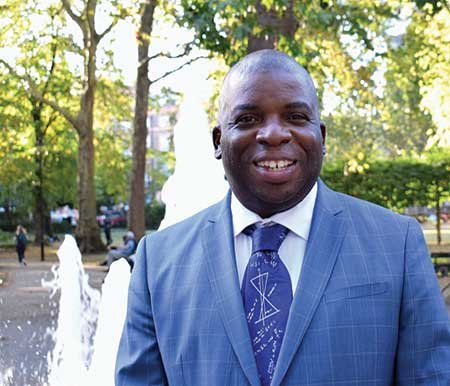Dr Nira Chamberlain: Batman’s maths makes him the best superhero
By Professor Nira Chamberlain
“Batman all the way.” That was my answer when I was asked recently which superhero I preferred – Batman or Superman.
Of course, as a mathematician, I had to show my working. The reason I plumped for the caped crusader is that he is a mathematician, and he uses his intellect to defeat his enemies rather than alien strength or any otherworldly abilities. Superman may be able to travel faster than a speeding bullet, but Batman can do the maths to work out the velocity and trajectory of that bullet.
According to Batman lore he has studied a range of subjects including mathematics. He has nine degrees – in criminal science, forensics, computer science, chemistry, engineering, biology, physics, advanced chemistry and technology – all of them underpinned by the mathematical sciences.
I’m not saying I identify with Batman, but he uses his maths skills to develop incredible tech that gives him an advantage over the many and various nefarious characters of Gotham. I’m an applied mathematician and I’ve brought my mathematics skills to bear on some pretty cool tech over the years, from the Royal Navy’s aircraft carrier HMS Queen Elizabeth to considering the dangers and opportunities that Artificial Intelligence presents. I even created a mathematical model of another superhero – The Black Panther.
The brilliant thing about Batman is that he has no superpower. He is bound by the rules of nature and human existence (albeit he might stretch them a bit from time to time). It’s maths that describes the world around us, helps us to understand and test the limitations we operate within and ultimately unleashes the benefits we can reap from that knowledge. Batman’s world is our world, and that’s why he must turn to maths to succeed, whether that be with the help of souped up vehicles or ingenious gadgets or by spotting patterns that allow him to outwit his enemies. (Remember Batman was one of the first characters to appear in Detective Comics – DC – because he started out as a detective of sorts).
And Batman’s skills stretch to teaching maths. Look up the Batman Equation on YouTube. Plug the equation into the right hardware and you can plot and draw the Batman symbol on a graph. It’s a smart way to engage pupils in the surprising possibilities maths can provide.
I was asked the question about Batman or Superman during an outtake while filming for a new campaign I’m delighted to be involved in. STEM from Black is a joint initiative between TeachFirst and Sir Lewis Hamilton’s Mission 44 campaign. Not enough Black pupils are pursuing careers in science, technology, engineering and maths. STEM from Black has a clear aim – to recruit 200 Black STEM teachers in the next two years. To help with that I joined the likes of Stemettes founder Anne Marie Imafidon and inspiring headteacher Nadine Bernard to make a short film explaining the issues and why we need more Black representation among teachers in general and particularly among STEM teachers. It was a serious shoot, and a lot of fun. See my Twitter feed for both the final video, and some of the other fun questions we answered like how to pronounce plantain – a conundrum maths can’t help with.
We mathematicians share an interest in promoting our subject. Whether that be in the classroom or in the corridors of power. That’s why I support Protect Pure Maths too. This week’s debate in parliament on ‘celebrating the contribution of maths to society’ was long overdue. And I applaud the PPM campaign in helping secure it.
PPM and STEM from Black are both examples of the great work going on to popularise, destigmatise and spread the word about the wonder and power of maths. I like to think I’ve recruited Batman to our cause. And with The Dark Knight on our side how can we lose?
Professor Nira Chamberlain OBE PhD HonDSc is an applied mathematician, past president of the Institute for Mathematics and its Applications, and Chair of Black Heroes Maths.


